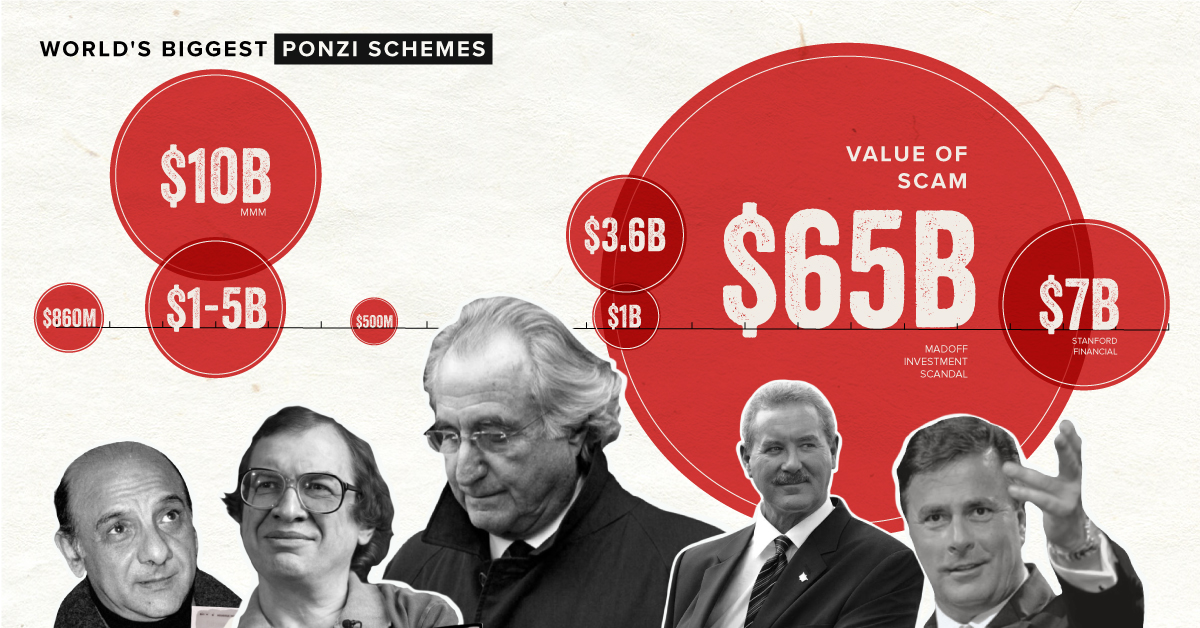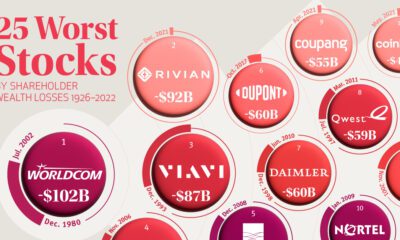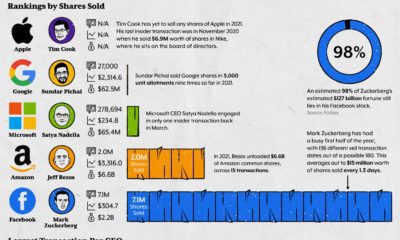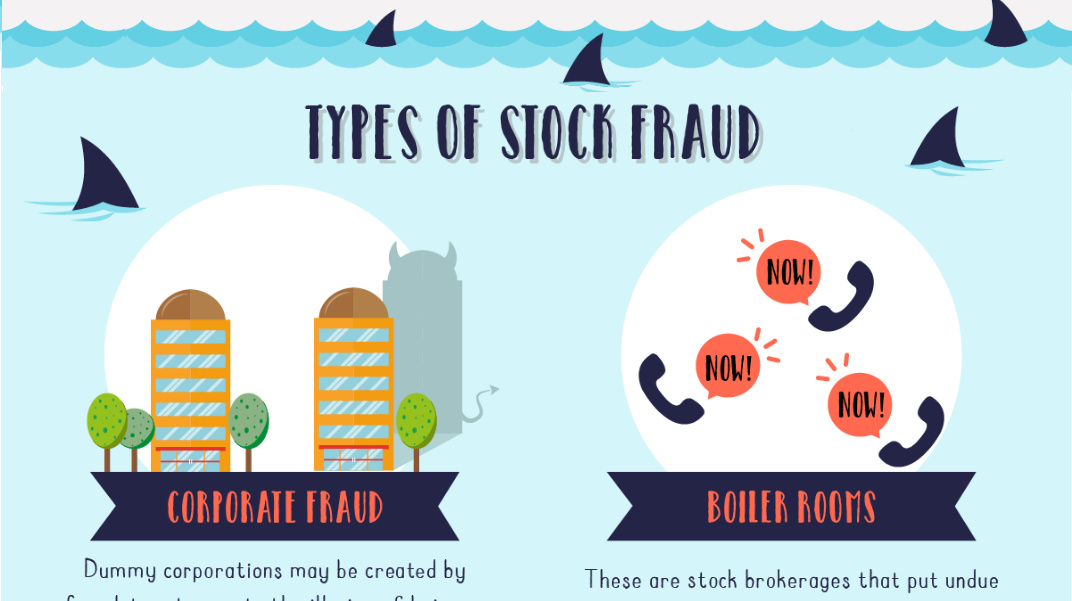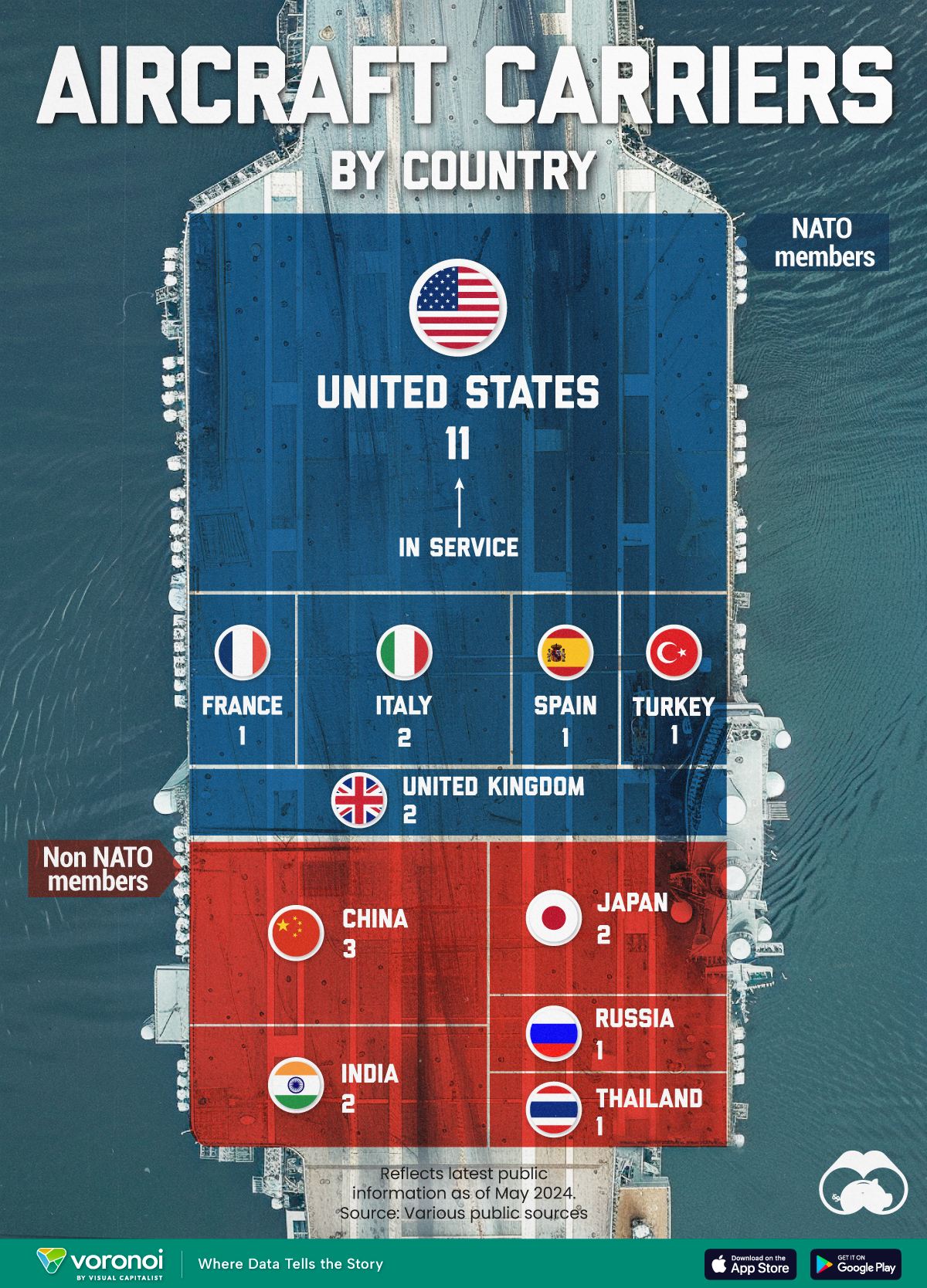Misc
Visualized: The Biggest Ponzi Schemes in Modern History

The Biggest Ponzi Schemes in Modern History
Some things simply sound too good to be true, but when money is involved, our judgement can become clouded.
This is often the case with Ponzi schemes, a type of financial fraud that lures investors by promising abnormally high returns. Money brought in by new members is used to pay the scheme’s founders, as well as its earlier investors.
The scheme is named after Charles Ponzi, an Italian who became infamous in the 1920s for claiming he could double his clients’ money within 90 days. Since then, numerous Ponzi schemes have been orchestrated around the globe.
To help you learn more about these sophisticated crimes, this infographic examines some of the biggest Ponzi schemes in modern history.
Ponzi Schemes in the 20th Century
The 1990s saw a number of large Ponzi schemes worth upwards of $500 million.
| Country | Date Ended | Name of Scheme and Founder | Value (USD) |
|---|---|---|---|
| Belgium | 1991 | Moneytron, Jean-Pierre Van Rossem | $860M |
| Romania | 1994 | Caritas, Ioan Stoica | $1B - $5B |
| Russia | 1994 | MMM, Sergei Mavrodi | $10B |
| U.S. | 1997 | Great Ministries International, Geral Payne | $500M |
In many cases, these schemes thrived by taking advantage of the unsuspecting public who often lacked any knowledge of investing. Caritas, for example, was a Ponzi scheme based in Romania that marketed itself as a “self-help game” for the poor.
The scheme was initially very successful, tricking millions of people into making deposits by offering the chance to earn an 800% return after three months. This was not sustainable, and Caritas was eventually unable to distribute further winnings.
Caritas operated for only two years, but its “success” was undeniable. In 1993, it was estimated that a third of the country’s money was circulating through the scheme.
Ponzi Schemes in the 21st Century
The American public has fallen victim to numerous multi-billion dollar Ponzi schemes since the beginning of the 21st century.
| Country | Date Ended | Name of Scheme and Founder | Value (USD) |
|---|---|---|---|
| U.S. | 2003 | Mutual Benefits Company, Joel Steinger | $1B |
| U.S. | 2003 | Petters Group Worldwide, Tom Petters | $4B |
| U.S. | 2008 | Madoff Investment Scandal, Bernie Madoff | $65B |
| U.S. | 2012 | Stanford Financial Group, Allen Stanford | $7B |
Many of these schemes have made major headlines, but much less is said about the thousands of everyday Americans that were left in financial ruin.
For victims of the Madoff Investment Scandal, receiving any form of compensation has been a drawn-out process. In 2018, 10 years after the scheme was uncovered, a court-appointed trustee managed to recover $13 billion by liquidating Madoff’s firm and personal assets.
As NPR reported, investors may recover up to 60 to 70 percent of their initial investment only. For victims who had to delay retirement or drastically alter their lifestyles, this compensation likely provides little solace.
Do the Crime, Pay the Time
Running a Ponzi scheme is likely to land you in jail for a long time, at least in the U.S.
In 2009, for example, 71-year-old Bernie Madoff pled guilty to 11 federal felonies and was sentenced to 150 years in prison. That’s 135 years longer than the average U.S. murder conviction.
Outside of the U.S., it’s a much different story. Weaker regulation and enforcement, particularly in developing countries, means a number of schemes are ongoing today.
Sergei Mavrodi, known for running the Russian Ponzi scheme MMM, started a new organization named MMM Global after being released from prison in 2011. Although he died in March 2018, his self-described “social financial network” has established a base in several Southeast Asian and African countries.
If you or someone you know is worried about falling victim to a Ponzi scheme, this checklist from the U.S. Securities and Exchange Commission (SEC) may be a useful resource.
Misc
Visualized: Aircraft Carriers by Country
The U.S. controls 40% of global aircraft carrier fleet.
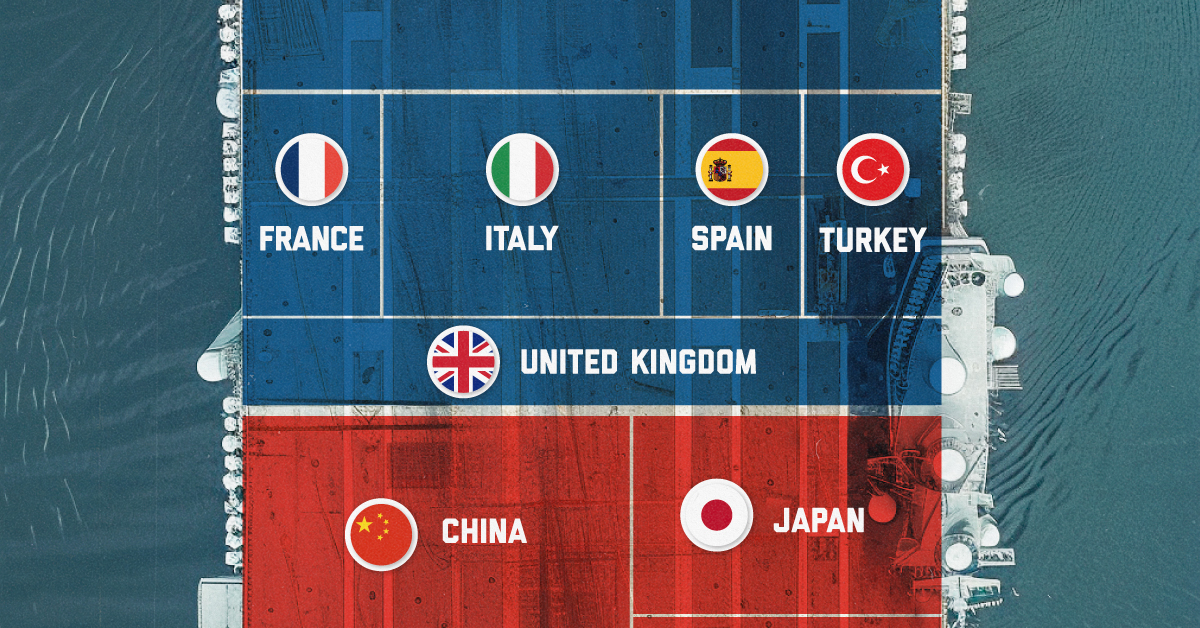
Visualized: Aircraft Carriers by Country
This was originally posted on our Voronoi app. Download the app for free on iOS or Android and discover incredible data-driven charts from a variety of trusted sources.
Aircraft carriers are warships equipped with a full-length flight deck for carrying, deploying, and recovering aircraft. Since they allow naval forces to utilize air power without relying on local bases, they usually serve as the capital ships of a fleet.
In this graphic, we visualize the number of aircraft carriers in service by country as of May 2024.
This graphic only includes ships capable of carrying planes (excluding those designed solely for helicopters). The list is based on data from various sources.
U.S. Dominance
The U.S., with 11 aircraft carriers in total, owns 40% of the global fleet. Some of the American carriers can carry around 80 fighters. The country’s total combined deck space is over twice that of all other nations combined.
| Country | In service | NATO Member |
|---|---|---|
| 🇺🇸 United States | 11 | Yes |
| 🇨🇳 China | 3 | No |
| 🇮🇳 India | 2 | No |
| 🇮🇹 Italy | 2 | Yes |
| 🇯🇵 Japan | 2 | No |
| 🇬🇧 United Kingdom | 2 | Yes |
| 🇫🇷 France | 1 | Yes |
| 🇷🇺 Russia | 1 | No |
| 🇪🇸 Spain | 1 | Yes |
| 🇹🇭 Thailand | 1 | No |
| 🇹🇷 Turkey | 1 | Yes |
| Total | 27 |
Along with France, the U.S. is the only nation with nuclear-powered aircraft carriers. These ships can remain at sea for as long as crew provisions last, without the need for refueling.
In 2024, China’s newest, largest, and most advanced aircraft carrier, the Fujian, started sea trials. With the addition of this ship, the country becomes second in our ranking.
Of 11 countries that have aircraft carriers in their fleets, six are NATO members.
Learn More About War Machines from Visual Capitalist
If you enjoyed this post, be sure to check out ‘Visualized: Top 15 Global Tank Fleets.’ This visualization showcases the most powerful tank fleets as of 2024.
-

 Healthcare5 days ago
Healthcare5 days agoLife Expectancy by Region (1950-2050F)
-

 Economy2 weeks ago
Economy2 weeks agoRanked: The Top 20 Countries in Debt to China
-

 Politics2 weeks ago
Politics2 weeks agoCharted: Trust in Government Institutions by G7 Countries
-

 Energy2 weeks ago
Energy2 weeks agoMapped: The Age of Energy Projects in Interconnection Queues, by State
-

 Mining2 weeks ago
Mining2 weeks agoVisualizing Global Gold Production in 2023
-

 Markets1 week ago
Markets1 week agoVisualized: Interest Rate Forecasts for Advanced Economies
-

 Economy1 week ago
Economy1 week agoThe Most Valuable Companies in Major EU Economies
-

 Markets1 week ago
Markets1 week agoThe World’s Fastest Growing Emerging Markets (2024-2029 Forecast)




